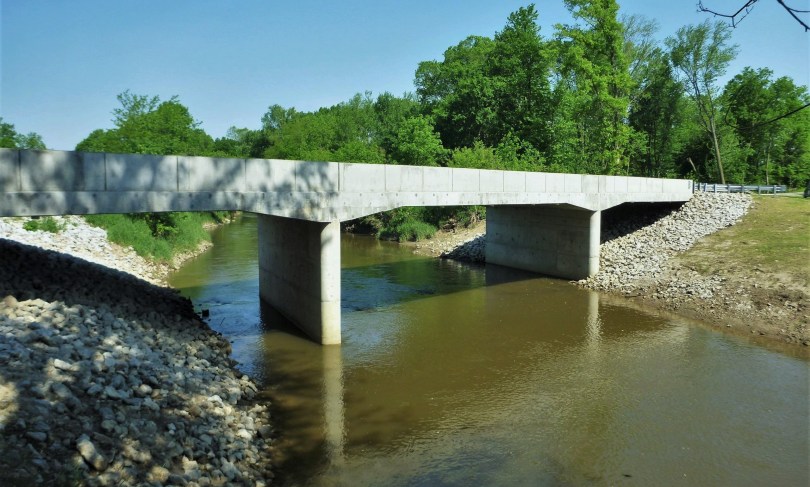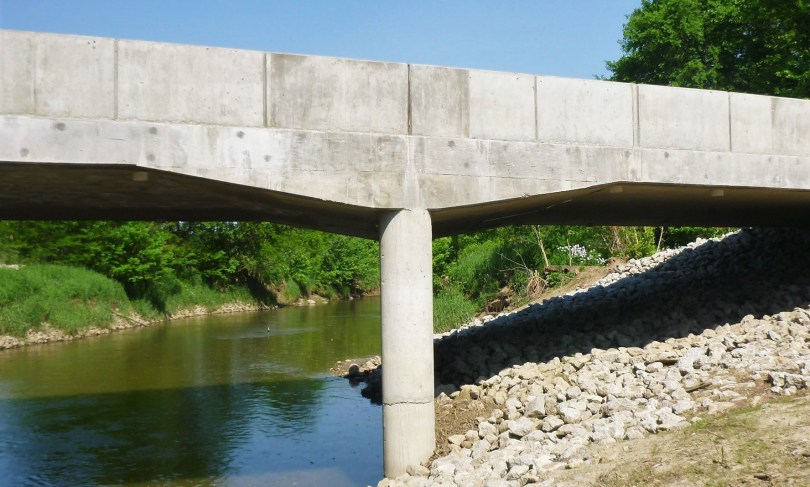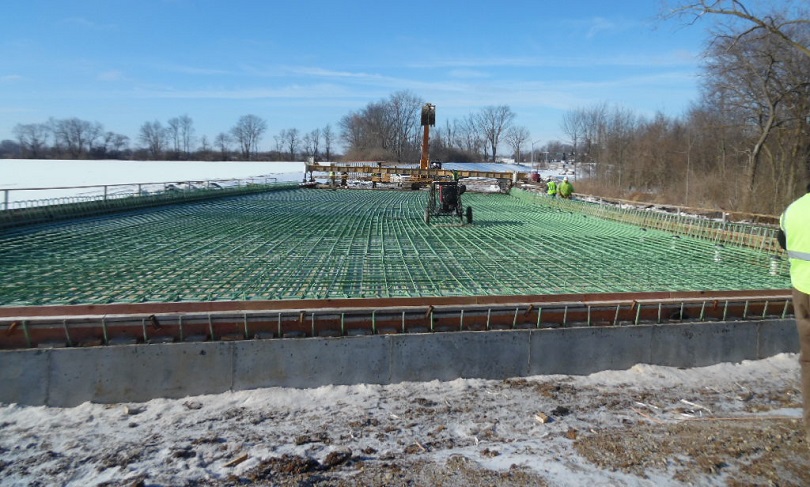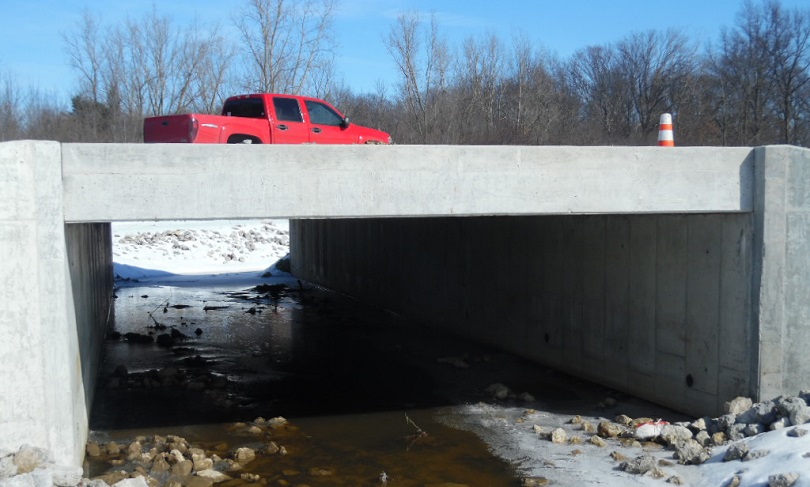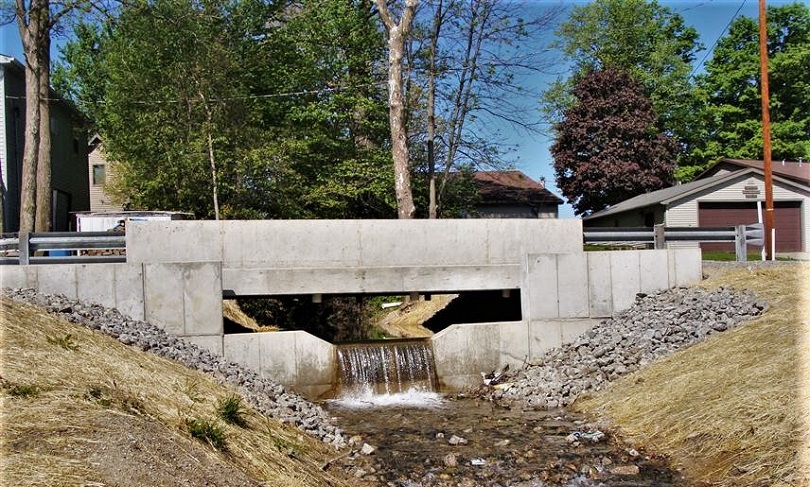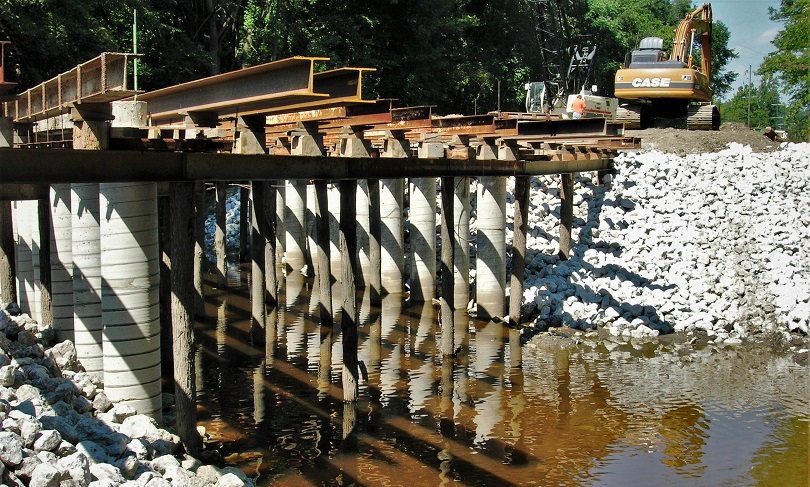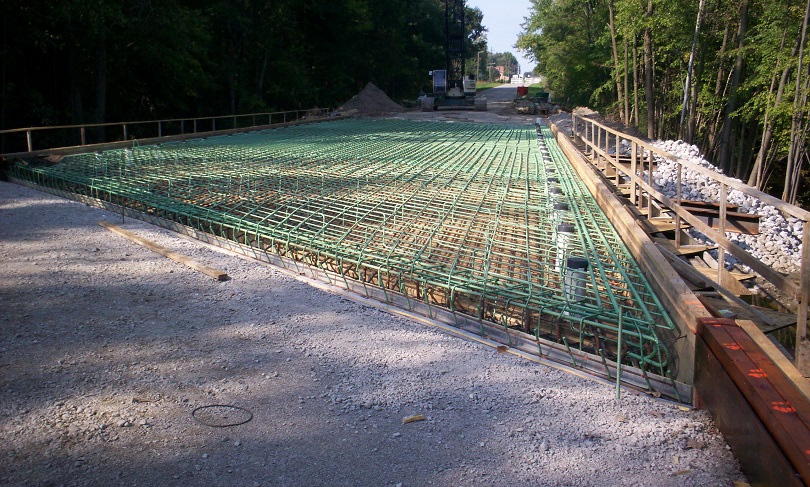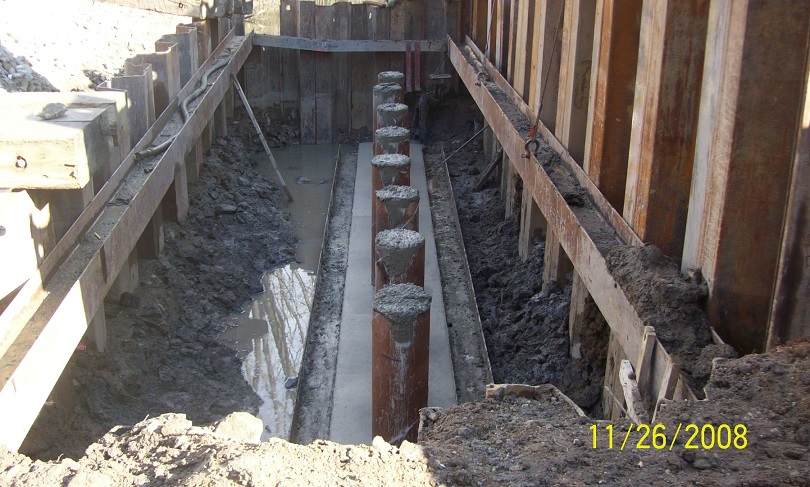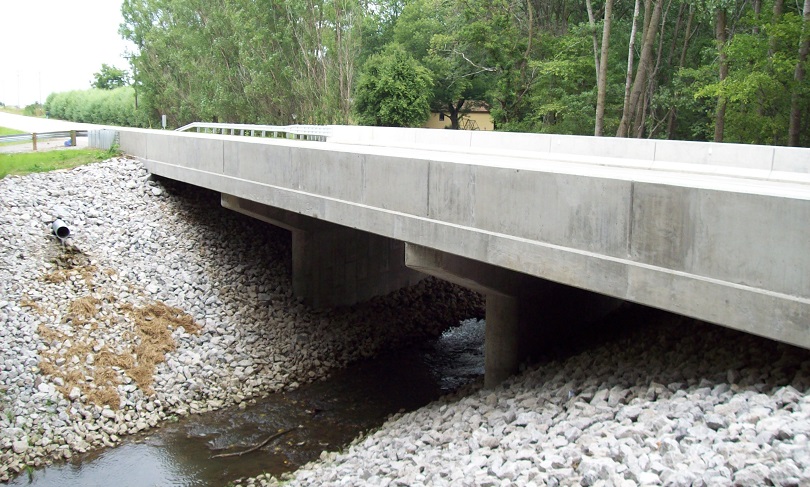Variable Depth Slab Bridge Design Software – Examples
Slab Bridge Examples
Slab bridges are very versatile and customizable for specific site conditions. Their uses range from simple spans with abutment walls to multi-span spill-thru types. They are particularly well suited where shallow depths are required to maintain waterway or meet clearance issues. Construction of curved structures can be much easier with slab bridges than straight segmented beam bridges.
While these bridges are typically used for shorter span structures, haunched options can extend continuous structures considerably. This section provides photos of some actual installations, including construction conditions. Plans for some typical structures are also provided to assist in detailing designs completed using V Slab.
Multi-span slab bridges typically require less detailing than the equivalent prestress or steel beam bridge alternatives. They can easily be customized for unique project geometric requirement. The following example plans provide actual project applications, with detailing solutions. These are examples based on typical standards and construction practices for the designer’s area. Requirements may vary based on local jurisdictions, standards and practices.
The first example is a bridge replacement project using a 3-span haunched slab bridge with wall piers. Hanched slab bidges typically become more cost effective than flat slabs when the center span exceeds about 40 feet.
For a 3-span continuous bridge, a flat slab is a cost effective solution, since there are no haunches to form. This typically requires a slightly thicker slab than the haunched option, which increases the effects of the slab dead load. However, when the main span is about 40 feet or less, the hanch may not provide as much benefit. Both a flat and haunched slab can easily be analyzed in V Slab to compare the concrete and reinfocing steel differences.
A 3-span continuous flat slab can also be used to replace existing simple span box beam superstructures. The 3 spans tend to be equal if the bridge was not continuous. This can make the first and last span a little less efficient since they would typically be set at about 75-80% of the center span to balance positive moments. Even with this slight inefficiency, a continuous flat slab can be more cost efective and durable than other replacement structure types.
If the 3-span continuous slab has appropriate proportions a haunched slab bridge is very effective as a superstructure replacement type. The depth of the superstructure maximizes the waterway area.
Slab bridges have been used for many decades in single span conditions. They are veristile and durable. When coupled with abutment walls, they provide an economical short span bridge with efficient waterway area.

